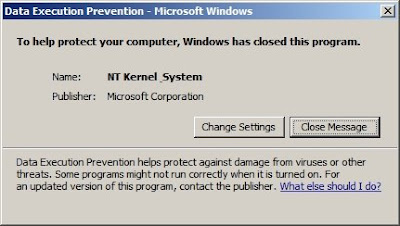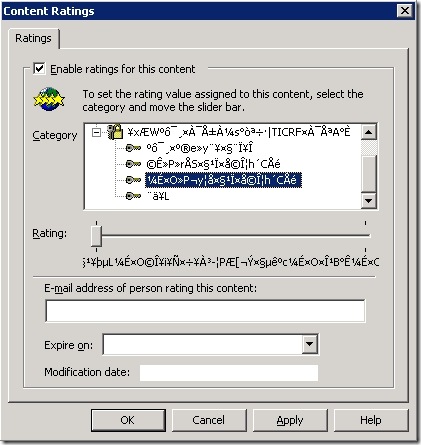Note: this content originally from http://mygreenpaste.blogspot.com. If you are reading it from some other site, please take the time to visit My Green Paste, Inc. Thank you.
A while back, there was a topic (Virtual Registry vs. "Real registry") in the Sysinternals Forums that brought up the question of how to set the virtualization-related flags of a registry key programmatically in Vista, rather than through the use of the REG.EXE tool's FLAGS switch. (For more information on the flags, see Mark Russinovich's article in TechNet Magazine, "Inside Windows Vista User Account Control"). Even before that topic in the forum, I had wondered how it was done but had not had a chance to explore. It didn't seem that many others were curious about it. That topic had resurrected the idea, but it quickly fell to the bottom of the list. I've finally gotten around to experimenting, and that leads to this write-up. I still don't see much in the way of this discussed anywhere, by searching for terms involved (data types, function param names, etc.), so hopefully this will help someone. (Keep in mind that there very well may be a reason Microsoft hasn't made this available through another, more direct API.)
In the referenced topic, I had gotten so far as determining that REG.EXE was doing its work through the use of NtSetInformationKey, an "undocumented" API in NTDLL.DLL.
NTSYSAPI
NTSTATUS
NTAPI
NtSetInformationKey(
IN HANDLE KeyHandle,
IN KEY_SET_INFORMATION_CLASS InformationClass,
IN PVOID KeyInformationData,
IN ULONG DataLength );
After a bit of plonking around in WinDbg, I've come up with the following following details. REG.EXE calls NtSetInformationKey, specifying a value of 2 for the InformationClass parameter. This parameter is of type KEY_SET_INFORMATION_CLASS, which wdm.h tells us is an enum:
typedef enum _KEY_SET_INFORMATION_CLASS {
KeyWriteTimeInformation,
KeyWow64FlagsInformation,
KeyControlFlagsInformation,
KeySetVirtualizationInformation,
KeySetDebugInformation,
MaxKeySetInfoClass // MaxKeySetInfoClass should always be the last enum
} KEY_SET_INFORMATION_CLASS;So the 2 for the InformationClass parameter would correspond to KeyControlFlagsInformation. WDM.H also suggests that this class has a type that one passes for the KeyInformationData parameter - KEY_CONTROL_FLAGS_INFORMATION:
typedef struct _KEY_CONTROL_FLAGS_INFORMATION {
ULONG ControlFlags;
} KEY_CONTROL_FLAGS_INFORMATION, *PKEY_CONTROL_FLAGS_INFORMATION;We have a basic idea of how to call NtSetInformationKey now. But what are the values that the ControlFlags member of KEY_CONTROL_FLAGS_INFORMATION can be set to? It would appear that the following (self-made) enum covers the pertinent flags - at least the ones REG.EXE FLAGS can handle (there may be more):
typedef enum _CONTROL_FLAGS {
RegKeyClearFlags = 0,
RegKeyDontVirtualize = 2,
RegKeyDontSilentFail = 4,
RegKeyRecurseFlag = 8
} CONTROL_FLAGS;The control flags are a bitmask, so you can OR them to set more than one.
Now that we have this information, what's left? We need to put it all together in a call to NtSetInformationKey. So, we need to get a pointer to the function in NTDLL.DLL. Then, we can declare a struct of type KEY_CONTROL_FLAGS_INFORMATION, set the ControlFlags member to be what we wish, and open a key to the desired location in the registry, that can be passed to NtSetInformationKey. In the end, we wind up with something like the following (error handling has been omitted):
typedef NTSYSAPI NTSTATUS (NTAPI* FuncNtSetInformationKey) (
HANDLE KeyHandle,
KEY_SET_INFORMATION_CLASS InformationClass,
PVOID KeyInformationData,
ULONG DataLength );
//...
FuncNtSetInformationKey ntsik = (FuncNtSetInformationKey)GetProcAddress(
GetModuleHandle( _T("ntdll.dll") ), "NtSetInformationKey" );
KEY_CONTROL_FLAGS_INFORMATION kcfi = {0};
kcfi.ControlFlags = RegKeyDontVirtualize | RegKeyRecurseFlag;
HKEY hTheKey = NULL;
RegOpenKeyEx( HKEY_LOCAL_MACHINE, _T("SOFTWARE\\Whatever"), 0, KEY_ALL_ACCESS, &hTheKey );
ntsik( hTheKey, KeyControlFlagsInformation, &kcfi, sizeof( KEY_CONTROL_FLAGS_INFORMATION ) );
RegCloseKey( hTheKey );
hTheKey = NULL;
The code above is the equivalent of invoking REG.EXE FLAGS HKLM\Software\Whatever SET DONT_VIRTUALIZE RECURSE_FLAGS. To clear the flags, just set kcfi.ControlFlags to RegKeyClearFlags (same as REG.EXE FLAGS HKLM\Software\Whatever SET).
Hopefully, this will prove useful to those that have wished to set these flags programmatically. In a future post, I hope to explore querying for these flags, ala REG.EXE FLAGS HKLM\Software\Whatever QUERY.
Note that this exploration was done on Windows Vista SP1. I would expect the content here to also apply to Windows Vista (no SP) as well as Windows Server 2008, but...




















